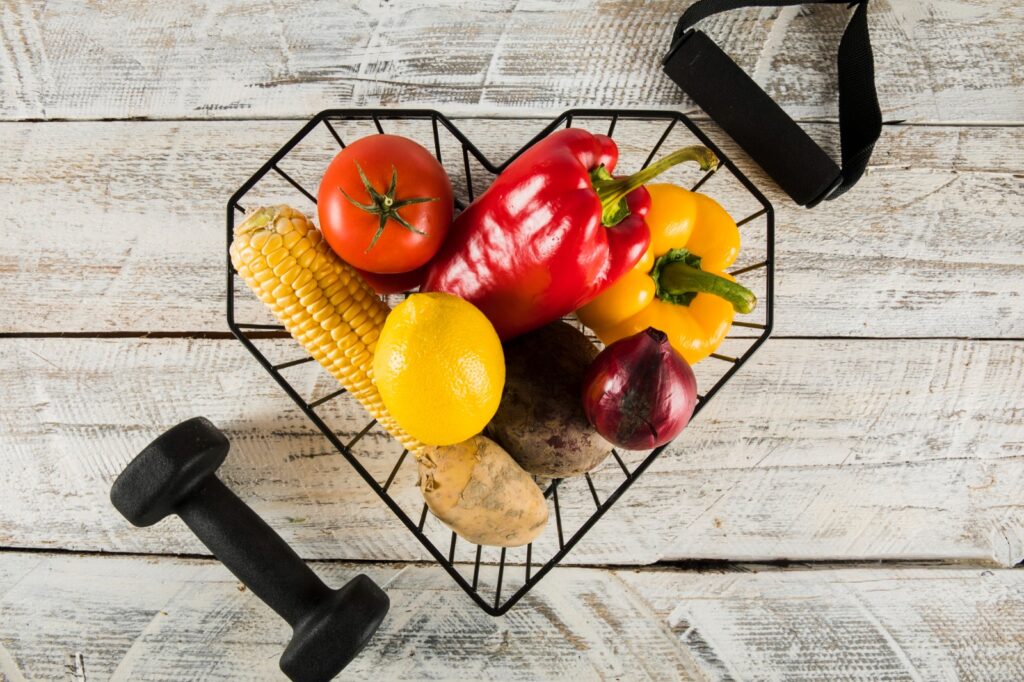
8 steps to prevent heart disease
How do you keep a healthy diet? What are heart-healthy foods? Reduce fat to prevent heart disease and heart attacks.
A heart-healthy diet is an integral part of a healthy lifestyle. Heart disease is the leading cause of death in the United States, so it’s essential to do what you can to reduce your risk.
Many factors contribute to heart disease, but a healthy diet is a great place to start. Here are 8 steps you can take to eat heart-healthy foods:
1. Eat plenty of fruits and vegetables.
Fruits and vegetables are packed with nutrients that are good for your heart. Aim for at least 5 servings of fruits and vegetables per day.
2. Choose whole grains.
Whole grains contain fiber and other nutrients that are good for your heart. Look for whole-grain bread, cereals, and pasta.
3. Limit saturated and trans fats.
Saturated and trans fats can raise cholesterol levels, leading to heart disease. Look for foods low in saturated and trans fats, and limit your intake of fatty meats and full-fat dairy products.
4. Choose healthy fats.
Not all fats are bad for you. Monounsaturated and polyunsaturated fats help reduce your cholesterol levels. Look for foods high in healthy fats, such as nuts, seeds, and avocados.
5. Limit sodium.
Too much sodium can raise your blood pressure, which can lead to heart disease.
There are many heart-healthy foods that you can incorporate into your diet to help keep your heart healthy.
Some of these foods include fish, nuts, seeds, and fruits. Incorporating these heart-healthy foods into your diet can help you maintain a healthy heart and prevent heart disease.
Ready to begin your wholesome diet? Here are eight tips to get you started.
Although you might understand that consumption-bound foods will increase your cardiopathy risk, dynamic consumption habits are commonly powerful.
So, whether you’ve had years of terrible eating habits or want to fine-tune your diet, here are eight healthy diet recommendations to consider.
You’ll be on a healthy diet if you know what meals to consume often and what foods to avoid.
Prevention: Heart attack prevention is a heart-healthy diet. How do you prevent heart attacks?
Heart attack prevention is the leading cause of death for both men and women in the United States.
Heart attack prevention occurs when a blocked artery prevents oxygen-rich blood from reaching your heart.
Heart attack prevention can cause irreversible damage to your heart muscle, so it’s essential to take steps to prevent one from happening.
There are several things you can do to prevent heart disease and heart attacks, including:
eating a healthy diet
exercising regularly
not smoking
managing your stress levels
maintaining a healthy weight
Heart disease is the leading cause of death in the United States, accounting for about 1 in 4 deaths. Fortunately, there are steps you can take to prevent heart disease.
Cutting saturated and trans fats from your diet can help prevent heart disease. Saturated fats are found in animal products, such as meat and dairy. Trans fats are in processed foods like margarine, crackers, and cookies.
Eating a diet rich in fruits and vegetables can also help prevent heart disease. Fruits and vegetables are good sources of fiber, antioxidants, and other nutrients that help keep your heart healthy.
Getting regular physical activity can also help prevent heart disease.
Heart attack prevention: Physical activity helps to improve cholesterol levels, control blood pressure, and maintain a healthy weight.
If you smoke, quitting is one of the best things you can do for your heart.
Heart attack prevention: Smoking dramatically increases your risk for heart disease. If you need help quitting, talk to your doctor about quit-smoking programs and medications.
These healthy changes can help prevent heart disease and improve your overall health.
HeartStick to a reasonable serving size: heart attack prevention: how to reduce heart fat?
It’s just as essential to track how much you eat as it is to track what you eat.
You’ll consume more calories than you need if you overfill your plate, have seconds, or eat until you’re satisfied. Parts served in restaurants are typically what anyone desires.
Following a couple of easy tips to manage food portion size will assist you in developing your diet as well as your heart and waistline:
• Use any low plate or bowl to assist in managing your parts.
• Eat a variety of low-calorie, high-nutrient meals, including fruits and vegetables.
• Reduce your consumption of high-calorie, high-sodium items such as refined, processed, or fast foods.
It’s also necessary to track the number of servings you eat. Some things to stay in mind:
• A serving size is a certain amount of food defined by standard measures such as cups, ounces, or items. For example, one serving of food is concerned with 1/3 to 1/2 cup or the dimensions of a disc. A serving of meat, fish, or chicken is two to three ounces of meat, fish, or chicken, or the size and thickness of a deck of cards.
• The suggested variety of servings per food cluster could vary depending on the special diet or pointers you are following.
• Judging serving size could be a learned talent. Unfortunately, you’ll have to be forced to use measuring cups, spoons, or a scale until you’re confident in your estimation.
Eat a wide range of fruits and vegetables – a heart-healthy diet
Vitamins and minerals may be found in abundance in vegetables and fruits.
Fiber-rich fruits and vegetables are low in calories. Like other plants or plant-based diets, fruits and vegetables contain chemicals that help prevent disorders.
A diet rich in fruits and vegetables may help you consume less high-calorie items such as meat, cheese, and snacks.
Incorporating veggies and fruits into your diet is typically straightforward. For quick snacks, keep veggies cleaned and chopped in your white goods.
Fruit should be kept in a small dish in your room so that you remember to consume it.
Because the significant elements, such as vegetable stir-fry or modern fruit, are incorporated into salads, choose recipes using vegetables or fruits.
fruits and vegetables to limit fruits and vegetables to select fruits and veggies to limit
• Vegetables and fruits, fresh or frozen
• Vegetables in cans with low sodium
• Fruit that has been packed in juice or water in a can
• Almonds
• Vegetables with creamy sauces
• Fried or breaded vegetables
• Canned fruit packed in serious sirup
• Frozen fruit with a sugar side
Choose whole grains – heart-healthy foods
Fiber and other nutrients in whole grains contribute to the regulation of force per unit area and cardiovascular health.
You’ll be able to increase the number of whole grains in a very wholesome diet by creating easy substitutions for refined grain merchandise.
Try a brand-new whole grain like whole-grain farro, quinoa, or barley.
To limit or avoid grain merchandise, choose grain merchandise to limit or avoid. heart-healthy foods
• Whole-wheat flour
• Whole-grain bread, ideally 100% cereal bread or 100% whole-grain bread
• High-fiber cereal with five g or a lot of fiber in a serving 4. Whole grains like rice, barley, and buckwheat (kasha)
• Whole-grain food
• Oatmeal (steel-cut or regular)
• White, refined flour
• White bread
• Muffins
• Frozen waffles
• Cornbread
• Doughnuts
• Biscuits
• Quickbread
• Cakes
• Pies
• Egg noodles
• Buttered popcorn
• High-fat snack batty
Limit your intake of harmful fats – heart-healthy foods
Limiting the amount of saturated and trans fats you consume is essential in lowering your blood sterol and reducing your arterial blood vessel disease risk.
A high blood sterol level will cause a buildup of plaques within the arteries, referred to as arteriosclerosis, which might increase the chance of attack and stroke.
The Yankee Heart Association offers these pointers for a lot of fat to incorporate into a very wholesome diet:
If you consume a pair of 1000 calories daily, that concerns eleven to thirteen grams. Trans fat Avoid
There are easy ways to chop back on saturated and trans fats: heart-healthy foods
• Trim fat off meat or lean meats with but 100% fat.
• When cooking and serving, use less butter, spread, and shortening.
• Use low-fat substitutions once attainable for a wholesome diet. For example, top a sandwich with a low-sodium sauce or low-fat meal, or spread sliced whole fruit or low-sugar fruit over bread instead of butter.
It should check food labels for cookies, cakes, frostings, batty, and chips. These items are cheap in organic process costs and may also include trans fats, even if they are branded as reduced fat. Foods containing trans fats are no longer permitted. Older products, on the other hand, should have them. Trans fats could also be listed as part of change oil on the ingredient label. fats to limit fats to select
• Extra virgin olive oil
• Canola oil
• Vegetable and nut oils
• Margarine, trans-fat-free
• Cholesterol-lowering spread, like Benecol, Promise Activ, or Sensible Balance
• Nuts, seeds
• Avocados
• Butter
• Lard
• Bacon fat
• Gravy
• white sauce
• Nondairy creamers
• Hydrogenated spread and shortening
• Cocoa butter, found in chocolate
• Coconut, palm, oilseed, and palm nut oils
When using fats, opt for monounsaturated fats, like vegetable or vegetable oils.
Unsaturated fats, found in bound fish, avocados, kookie, and seeds, are sensible selections for a wholesome diet.
Monounsaturated and unsaturated fats may help you lower your total blood sterol when taken instead of saturated fat. On the other hand, moderation is essential.
Every kind of fat has a large number of calories. The ground oilseed is an easy way to add healthy fat (and fiber) to your diet.
Flaxseeds square measure tiny brown seeds high in fiber and polyunsaturated fatty acids.
Studies have shown that oilseed lowers unhealthy sterol levels in some individuals.
You may use a coffee grinder or other household gadget to ground the flaxseeds and add a teaspoon to meals, applesauce, or cereal.
Select supermolecule sources that are low in fat.
External sources of supermolecule include lean meat, poultry, and fish, low-fat dairy farm goods, and eggs.
Opt for lower-fat choices, like skinless chicken breasts instead of cooked chicken patties and milk instead of milk. Fish could be a sensible variety to high-fat meats.
Bound kinds of fish are made of polyunsaturated fatty acids, which might lower blood fats called triglycerides.
Polyunsaturated fatty acids are abundant in cold-water fish such as salmon, mackerel, and herring.
Oilseed, walnuts, soybeans, and vegetable oil are some of the different sources. Legumes — beans, peas, and lentils — are sensible, low-fat sources of supermolecule and contain no sterol, creating suitable substitutes for meat.
Work plant supermolecule for animal supermolecule — a soy or bean burger for a hamburger — can reduce fat and sterol intake and increase fiber intake.
Proteins to pick from while limiting or avoiding
• Low-fat dairy farm merchandise, like skim or low-fat (1%) milk, food, and cheese
• Eggs
• Fish, particularly fatty, cold-water fish like salmon
• Skinless poultry
• Legumes
• Soybeans and soy merchandise, like soy burgers and curd
• Lean ground meats
• Full-fat milk and different dairy farm merchandise
• Organ meats, like liver
• Fatty and marbleized meats
• Spareribs
• Hot dogs and sausages
• Bacon
• cooked or breaded meats
Limit or cut back salt (sodium) – heart-healthy diet
Eating excessive salt will cause high force per unit area, a risk issue for cardiopathy. Limiting salt (sodium) is a vital part of a wholesome diet.
The Yankee Heart Association recommends that:
• A healthy adult does not consume more than a pair of 300 milligrams (mg) of metal per day (about a teaspoon of salt)
• Most individuals should not consume more than 1,500 mg of metal daily.
While lowering the amount of salt you add to your meals at the table or in the kitchen may be a good start, a lot of the salt you consume comes from canned or processed foods like soups, food, and frozen entrees.
It may reduce salt consumption by consuming everyday foods and making soups and stews. If you wish for the convenience of canned soups and ready meals, explore ones with no side salt or reduced metallic elements.
Be cautious of foods that claim to be lower in metallic elements because they’re oceans, one with ocean salt rather than regular flavorer — sea salt has a constant organic process price as regular salt.
Another strategy to reduce the amount of salt you consume is carefully choosing your condiments.
Reduced-sodium versions of some condiments are available. Salt alternatives provide taste to your cuisine while removing the metallic component.
Low-salt things to choose from high-salt things to limit or avoid
• Herbs and spices
• Salt-free seasoning blends
• Canned soups or ready meals with no side or reduced salt
• Condiments with less salt, such as reduced-salt condiments and reduced-salt condiments
• Sodium bicarbonate
• Ready-to-eat items such as freezer dinners and canned soups
• Tomato juice
• Condiments like condiment, mayo, and condiment
• Restaurant meals
Plan: produce daily menus – heart-healthy diet
Create daily menus for victimization in the six ways listed on top. Prioritize vegetables, fruits, and whole grains when deciding what to eat for each meal and snack.
Limit salty meals and choose lean supermolecule sources and healthy fats. Keep an eye on portion sizes and provide variety to your meal options.
For example, make a turtle bean burger if you have grilled salmon on hand.
This ensures that your body receives all of the necessary nutrients. Selection conjointly makes meals and snacks a lot more fascinating.
Allow yourself to associate the occasional treat – a heart-healthy diet
Allow yourself to associate indulgence with each currently so. Candy or a few potato chips will not derail your wholesome diet.
However, don’t use it as an excuse to abandon good eating habits.
Things will eventually level out if the excess is an exception rather than the norm. Most importantly, you eat healthy meals most of the time.
If you include these eight suggestions into your daily routine, you’ll find that healthy eating is feasible and enjoyable.
With some planning and simple modifications, you can eat together while keeping your heart in mind.
Final Thought
Although creating dietary changes is often tricky, it is vital to recollect that even tiny changes will build an enormous distinction in your heart health.
So, to begin with, these eight tips still ride them over time. If you have any queries or want to facilitate obtaining started, do not hesitate to succeed in intent on the US.
We’re here to support you on your journey to a healthier heart.









